Digitization of Audiovisual Material
Within the audiovisual material included in this project, several different formats are represented, including: Betacam, VHS, mini digital video cassettes, 16 mm film, audio cassettes, and mini audio cassettes. Magnetic media in particular is subject to degradation over time and will eventually become unreadable.
The content of the media within the collections ranges from vintage film reels from Dunbar High School and public service announcements concerning the Dunbar History Project and the Little Rock School District to oral history recordings from students and staff members at Central and Dunbar High Schools about their time at the respective schools. There is also footage of the 50th Women’s Emergency Committee Reunion.
One of the most visually interesting pieces is the 16 mm film reel. It is a silent film entitled "A Day at Dunbar" produced by Dunbar High School in 1946 to capture the daily life of students at the school. It includes scenes of administrative staff and teachers, classrooms, and extracurricular activities. The film can be viewed here.
The public service announcement for the Dunbar History Project provides context for the National Dunbar Alumni Association Historical Collection. In the announcement, the National Dunbar History Project solicits materials and stories pertaining to student experiences at Dunbar High School from alumni.
Through this project the Dunbar History Project was able to collect individual files found in series 1 of the National Dunbar Alumni Association Historical Collection, which enriches the historical narrative of Dunbar High School.
In former Dunbar High School student Henri Jean Crofton Carey’s oral history interview she discusses her childhood in Little Rock and her time at Dunbar. The full interview and transcript can be accessed here.
Material from the CALS Butler Center for Arkansas Studies’ Office of Desegregation Monitoring records contains promotional videos created by the Little Rock and Pulaski County Special School Districts advertising incentive programs and inter-district schools created to combat de facto segregation throughout the 1990s.
The Central High National Historic Site Museum Collection features digital video recordings from the 50th reunion of the Women's Emergency Committee as well as an accompanying symposium.
Digitizing this material is the best way to ensure that the content remains accessible to researchers in the future. It serves a dual purpose, providing a way for the items to be discoverable worldwide, via the Internet, and also protecting the originals from damage. These digitization efforts will allow patrons to engage more easily with the subject of desegregation in Arkansas through audiovisual media.
